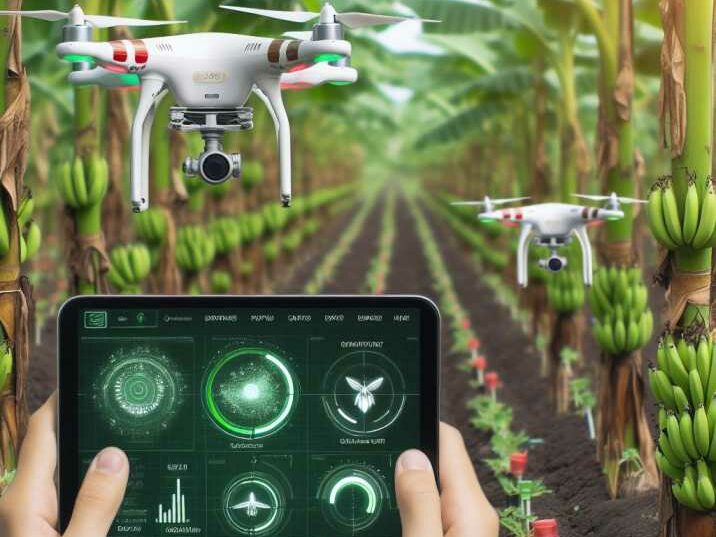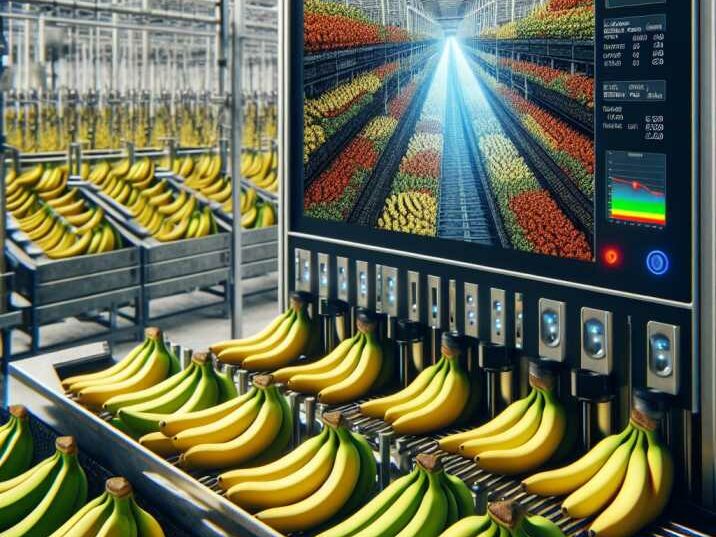Introduction:
Table of Contents
Cavendish bananas are among the most popular fruits globally, cherished for their sweetness, versatility, and nutritional benefits. Behind the scenes, Technological advancements in Cavendish banana farming and processing are driving significant improvements. From precision agriculture techniques to state-of-the-art processing methods, innovation is reshaping the banana industry. In this article, we delve into the latest advancements in Cavendish banana cultivation and processing, highlighting their impact on productivity, sustainability, and quality.
Technological Advancements in Cavendish Banana Farming and Processing:
1. Precision Agriculture Techniques:
Precision agriculture, facilitated by remote sensing and GIS (Geographic Information System) technologies, is revolutionizing banana farming. These tools enable farmers to gather detailed information about soil conditions, moisture levels, and plant health. By employing drones equipped with sensors, farmers can monitor vast banana plantations efficiently. This data-driven approach enhances decision-making, optimizing resource utilization and crop management practices.
2. Biotechnology and Genetic Engineering:
Biotechnology plays a crucial role in improving banana varieties’ resistance to diseases and pests. Genetic engineering techniques enable scientists to develop disease-resistant banana strains, such as those resistant to Panama disease, which threatens Cavendish bananas globally. By enhancing the crop’s resilience, biotechnology safeguards yields and ensures food security for millions worldwide.
3. Smart Irrigation Systems:
Water scarcity poses a significant challenge to banana cultivation in many regions. Smart irrigation systems, incorporating sensor technology and automated controls, offer a solution by optimizing water usage. These systems monitor soil moisture levels in real-time and adjust irrigation schedules accordingly, minimizing water wastage and maximizing crop yields.
4. Sustainable Farming Practices:
In response to environmental concerns, many banana producers are adopting sustainable farming practices. This includes organic farming methods, crop rotation, and integrated pest management strategies. By reducing reliance on chemical inputs and promoting biodiversity, sustainable practices support ecosystem health and resilience, ensuring the long-term viability of banana cultivation.

Technological Innovations in Cavendish Banana Processing:
1. Advanced Sorting and Grading Systems:
Modern processing facilities utilize computer vision and machine learning algorithms to automate sorting and grading processes. These systems analyze bananas’ size, color, and quality, ensuring consistent product standards and minimizing waste. By streamlining operations, advanced sorting and grading systems enhance efficiency and product quality.
2. Cold Chain Management:
Maintaining optimal temperature and humidity levels is critical during banana transportation and storage. Cold chain management technologies, such as refrigerated containers and controlled atmosphere storage, preserve bananas’ freshness and extend their shelf life. By minimizing spoilage and reducing post-harvest losses, cold chain solutions enhance marketability and profitability.
3. Value-Added Processing Techniques:
In addition to fresh consumption, bananas are processed into various value-added products, including frozen desserts, juices, and dried snacks. Advanced processing techniques, such as freeze-drying and microwave-assisted drying, preserve the fruit’s flavor and nutritional content while extending its shelf life. These value-added products cater to diverse consumer preferences and expand market opportunities.
4. Waste Reduction and Recycling:
Efforts to minimize waste and promote sustainability extend to banana processing facilities. Innovative technologies, such as anaerobic digestion and composting, enable the conversion of banana waste into valuable byproducts, such as biogas and organic fertilizers. By closing the loop on waste management, these technologies contribute to resource efficiency and environmental stewardship.

Table of Information:
| Technological Advancements | Benefits |
|---|---|
| Precision Agriculture | Enhanced productivity and sustainability |
| Biotechnology | Disease-resistant banana varieties |
| Smart Irrigation Systems | Optimal water usage and crop yields |
| Sustainable Farming Practices | Reduced environmental impact |
| Advanced Sorting and Grading Systems | Consistent product standards and waste reduction |
| Cold Chain Management | Extended shelf life and reduced spoilage |
| Value-Added Processing Techniques | Diverse product offerings and market expansion |
| Waste Reduction and Recycling | Resource efficiency and environmental stewardship |
Conclusion:
The technological advancements outlined above represent the vanguard of innovation in Cavendish banana farming and processing. By harnessing the power of science and technology, stakeholders across the banana supply chain are driving progress towards a more sustainable, efficient, and resilient industry. As we look to the future, continued investment in research and development will be paramount in addressing emerging challenges and unlocking new opportunities for growth and prosperity.
FAQs:
Q1: What is precision agriculture, and how does it benefit banana farming?
A1: Precision agriculture utilizes advanced technologies such as remote sensing and GIS to gather detailed data about soil conditions, moisture levels, and plant health. By optimizing resource utilization and crop management practices, precision agriculture enhances productivity and sustainability in banana farming.
Q2: How does biotechnology contribute to disease resistance in Cavendish bananas?
A2: Biotechnology enables scientists to develop genetically engineered banana strains with enhanced resistance to diseases such as Panama disease. By deploying disease-resistant varieties, farmers can safeguard yields and ensure food security for millions worldwide.
Q3: What role do smart irrigation systems play in banana cultivation?
A3: Smart irrigation systems, equipped with sensor technology and automated controls, optimize water usage by monitoring soil moisture levels in real-time. By minimizing water wastage and maximizing crop yields, these systems enhance water efficiency and sustainability in banana cultivation.
Q4: How do advanced sorting and grading systems improve banana processing?
A4: Advanced sorting and grading systems utilize computer vision and machine learning algorithms to automate the sorting and grading of bananas based on size, color, and quality. By ensuring consistent product standards and minimizing waste, these systems enhance efficiency and product quality in banana processing.
Q5: What are value-added processing techniques, and how do they enhance banana products? A5: Value-added processing techniques involve transforming bananas into various products such as frozen desserts, juices, and dried snacks. Techniques such as freeze-drying and microwave-assisted drying preserve the fruit’s flavor and nutritional content while extending its shelf life, catering to diverse consumer preferences and expanding market opportunities.
